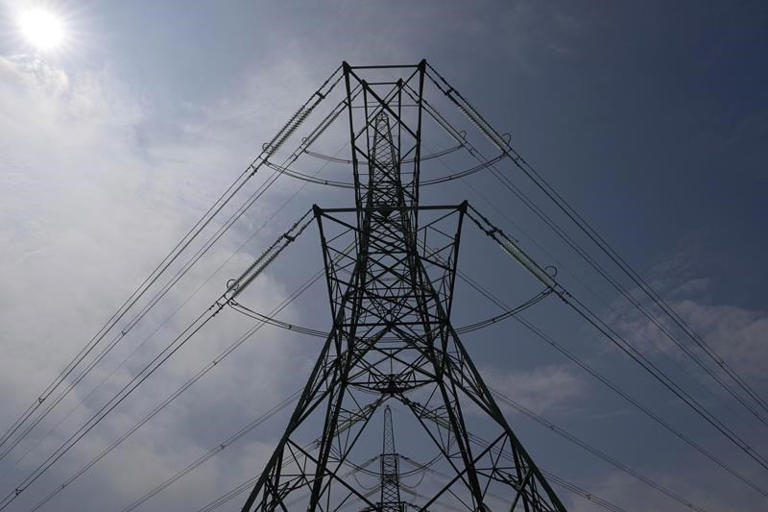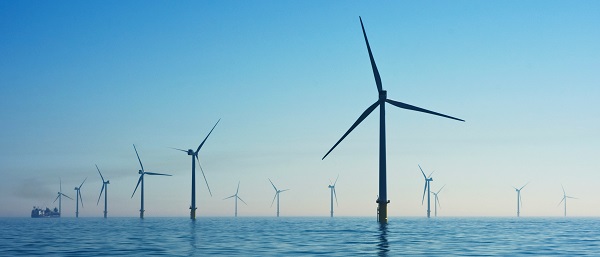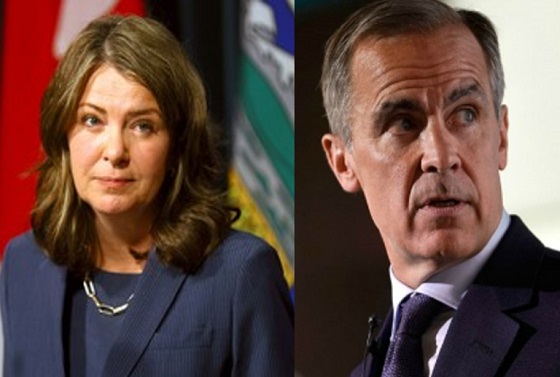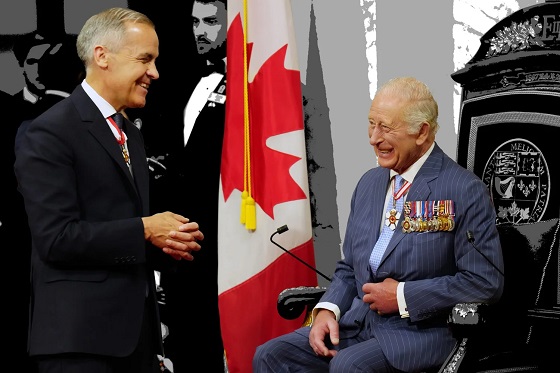Business
New York and Vermont Seek to Impose a Retroactive Climate Tax

From Heartland Daily News
By Joshua Loucks for the Cato Institute.
Energy producers will be subject to retroactive taxes in New York if the state assembly passes Senate Bill S2129A, known as the “Climate Change Superfund Act.” The superfund legislation seeks to impose a retroactive tax on energy companies that have emitted greenhouse gases (GHGs) and operated within the state over the last seventy years.
If passed, the new law will impose $75 billion in repayment fees for “historical polluters,” who lawmakers assert are primarily responsible for climate change damages within the state. The state will “assign liability to and require compensation from companies commensurate with their emissions” over the last “70 years or more.” The bill would establish a standard of strict liability, stating that “companies are required to pay into the fund because the use of their products caused the pollution. No finding of wrongdoing is required.”
New York is not alone in this effort. Superfunds built on retroactive taxes on GHG emissions are becoming increasingly popular. Vermont recently enacted similar legislation, S.259 (Act 122), titled the “Climate Superfund Act,” in which the state also retroactively taxes energy producers for historic emissions. Similar bills have also been introduced in Maryland and Massachusetts.
Climate superfund legislation seems to have one purpose: to raise revenue by taxing a politically unpopular industry. Under the New York law, fossil fuel‐producing energy companies would be taxed billions of dollars retroactively for engaging in legal and necessary behavior. For example, the seventy‐year retroactive tax would conceivably apply to any company—going back to 1954—that used fossil fuels to generate electricity or produced fuel for New York drivers.
The typical “economic efficiency” arguments for taxing an externality go out the window with the New York and Vermont approach, for at least two reasons. First, the goal of a blackboard or textbook approach to a carbon tax is to internalize the GHG externality. To apply such a tax accurately, the government would need to calculate the social cost of carbon (SCC).
Unfortunately, estimating the SCC is methodologically complex and open to wide ranges of estimates. As a result, the SCC is theoretically very useful but practically impossible to calculate with any reasonable degree of precision.
Second, the retroactive nature of these climate superfunds undermines the very incentives a textbook tax on externalities would promote. A carbon tax’s central feature is that it is intended to reduce externalities from current and future activity by changing incentives. However, by imposing retroactive taxes, the New York and Vermont legislation will not impact emitters’ future behavior in a way that mimics a textbook carbon tax or improves economic outcomes.
Arbitrary and retroactive taxes can, however, raise prices for consumers by increasing policy uncertainty, affecting firm profitability, and reducing investment (or causing investors to flee GHG‐emitting industries in the state altogether). Residents in both New York and Vermont already pay over 30 percent more than the US average in residential electricity prices, and this legislation will not lower these costs to consumers.
Climate superfunds are not a serious attempt to solve environmental challenges but rather a way to raise government revenue while unfairly punishing an entire industry (one whose actions the New York legislation claims “have been unconscionable, closely reflecting the strategy of denial, deflection, and delay used by the tobacco industry”).
Fossil fuel companies enabled GHG emissions, of course, but they also empowered significant growth, mobility, and prosperity. The punitive nature of the policy is laid bare by the fact that neither New York nor Vermont used a generic SCC or an evidentiary proceeding to calculate precise damages.
Finally, establishing a standard in which “no finding of wrongdoing is required” to levy fines against historical actions that were (and still are) legally permitted sets a dangerous precedent for what governments can do, not only to businesses that have produced fossil fuels but also to individuals who have consumed them.
Cato research associate Joshua Loucks contributed to this post.
Originally published by the Cato Institute. Republished with permission under a Creative Commons Attribution-NonCommercial-ShareAlike 4.0 International License.
Business
Resurfaced Video Shows How Somali Scammers Used Day Care Centers To Scam State


From the Daily Caller News Foundation
A resurfaced 2018 video from a Minneapolis-area TV station shows how Somali scammers allegedly bilked Minnesota out of millions of dollars for services that they never provided.
Independent journalist Nick Shirley touched off a storm on social media Friday after he posted a photo of one day-care center, which displayed a banner calling it “The Greater Learing Center” on X, along with a 42-minute video that went viral showing him visiting that and other day-care centers. The surveillance video, which aired on Fox 9 in 2018 after being taken in 2015, showed parents taking kids into the center, then leaving with them minutes later, according to Fox News.
“They were billing too much, they went up to high,” Hennepin County attorney Mike Freeman told Fox 9 in 2018. “It’s hard to imagine they were serving that many people. Frankly if you’re going to cheat, cheat little, because if you cheat big, you’re going to get caught.”
Dear Readers:
As a nonprofit, we are dependent on the generosity of our readers.
Please consider making a small donation of any amount here.
Thank you!
Democratic Gov. Tim Walz of Minnesota was accused of engaging in “systemic” retaliation against whistleblowers in a Nov. 30 statement by state employees. Assistant United States Attorney Joe Thompson announced on Dec. 18 that the amount of suspected fraud in Minnesota’s Medicaid program had reached over $9 billion.
After Shirley’s video went viral, FBI Director Kash Patel announced the agency was already sending additional resources in a Sunday post on X, citing the case surrounding Feeding Our Future, which at one point accused the Minnesota government of racism during litigation over the suspension of funds after earlier allegations of fraud.
KSTP reported that the Quality Learning Center, one of the centers visited by Shirley, had 95 citations for violations from one Minnesota agency between 2019 to 2023.
President Donald Trump announced in a Nov. 21 post on Truth Social that he would end “Temporary Protected Status” for Somalis in the state in response to allegations of welfare fraud and said that the influx of refugees had “destroyed our country.”
Business
Disclosures reveal Minnesota politician’s husband’s companies surged thousands-fold amid Somali fraud crisis

Rep. Ilhan Omar’s latest financial disclosures reveal seemingly sudden wealth accumulation inside her household, even as Minnesota grapples with revelations of massive fraud that may have siphoned more than $9 billion from government programs. The numbers, drawn from publicly filed congressional reports, show two companies tied to Omar’s husband, Tim Mynett, surging in value at a pace that raises more questions than answers.
According to the filings, Rose Lake Capital LLC — a business advisory firm Mynett co-founded in 2022 — jumped from an assessed range of $1 to $1,000 in 2023 to between $5 million and $25 million in 2024. Even using the most conservative assumptions allowed under Congress’ broad valuation ranges, the company’s value would have increased thousands of times in a single year. The firm advertises itself as a facilitator of “deal-making, mergers and acquisitions, banking, politics and diplomacy.”
Archived versions of Rose Lake’s website once showcased an eye-catching lineup of political heavyweights: former Ambassador to Bahrain Adam Ereli, former Sen. Max Baucus, and prominent Democratic National Committee alumni William Derrough and Alex Hoffman. But as scrutiny surrounding Omar intensifies — particularly over whether her political network intersected with sprawling fraud schemes exposed in Minnesota — the company has quietly scrubbed its online footprint. Names and biographies of team members have vanished, and the firm has not clarified whether these figures remain involved. Omar’s office offered no comment when asked to explain the company’s sudden growth or the removal of its personnel listings.
Mynett, Omar’s third husband, has long been a controversial presence in her political orbit, but the dramatic swell in his business holdings comes at a moment when trust in Minnesota’s oversight systems is already badly shaken. Federal and state investigators now estimate that fraud involving pandemic-era and nonprofit programs may exceed $9 billion, a staggering figure for a state often held up as a model of progressive governance. For many residents, the revelation that Omar’s household wealth soared during the same period only deepens skepticism about who benefited from Minnesota’s expansive social-spending apparatus.
The financial story doesn’t stop with Rose Lake. A second Mynett-linked entity, ESTCRU LLC — a boutique winery registered in Santa Rosa, California — reported an assessed value of $1 million to $5 million in 2024. Just a year earlier, Omar disclosed its worth at $15,000 to $50,000. Despite the dramatic valuation spike, ESTCRU’s online storefront does not appear to function, its last social media activity dates back to early 2023, and the phone number listed on its website is no longer in service. As with Rose Lake, Omar’s office declined to comment on the winery’s sudden rise in reported value.
The House clerk has yet to release 2025 disclosures, leaving unanswered how these companies are performing today — and how such explosive growth materialized in the first place.
-

 Business9 hours ago
Business9 hours agoICYMI: Largest fraud in US history? Independent Journalist visits numerous daycare centres with no children, revealing massive scam
-

 Daily Caller2 days ago
Daily Caller2 days agoWhile Western Nations Cling to Energy Transition, Pragmatic Nations Produce Energy and Wealth
-

 Daily Caller1 day ago
Daily Caller1 day agoUS Halts Construction of Five Offshore Wind Projects Due To National Security
-

 Alberta2 days ago
Alberta2 days agoAlberta Next Panel calls for less Ottawa—and it could pay off
-

 Bruce Dowbiggin1 day ago
Bruce Dowbiggin1 day agoBe Careful What You Wish For In 2026: Mark Carney With A Majority
-

 Energy2 days ago
Energy2 days agoWhy Japan wants Western Canadian LNG
-

 Business2 days ago
Business2 days agoMainstream media missing in action as YouTuber blows lid off massive taxpayer fraud
-

 Business2 days ago
Business2 days agoLand use will be British Columbia’s biggest issue in 2026






